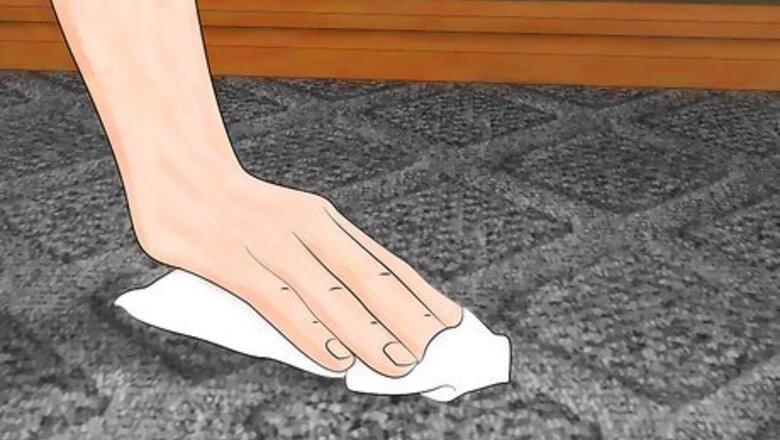
views
Removing Stains
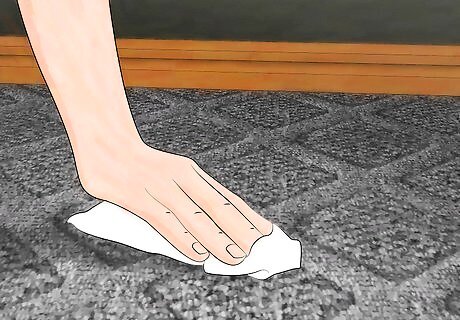
Try water first. The simplest and easiest way to remove a tough stain is to apply cold water to the tainted area. Blot the stain with a dry towel first to avoid rubbing the stain deeper into the carpet. Dampen a clean white towel and gently work the towel into the stain and then blot the stain with a clean, dry cloth. Repeat these steps until the stain is gone. Never scrub your Berber carpet. You will damage the fibers and cause fuzziness and snags. Blot from the outer edge of the stain toward the center of the stain. This prevents you from spreading the stain and making it larger.
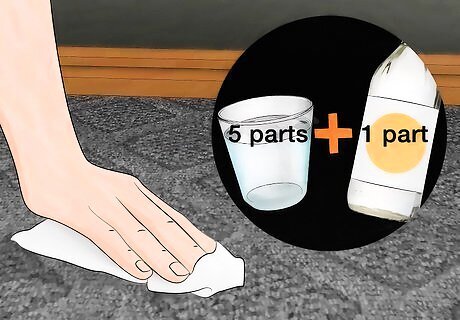
Use a cleaning solution. If water is not working, try a cleaning solution. You can purchase a cleaning solution that is formulated for cleaning carpets or you can make your own using vinegar and water. Mix white vinegar and water using a ratio of 1 part vinegar to 5 parts water. For example, mix 1 tablespoon (15 ml) of vinegar with 5 tablespoons (74 ml) of water. Test whatever cleaner you use in a small area before you apply it to the rest of the carpet. Try it out in an area that is not visible such as under a piece of furniture or a rug. If it causes damage to your carpet, you can cover it up. Do not use any cleaners that contain detergent or soap. This will result in a soapy residue that you will not be able to remove from the carpet. This residue may also attract dirt. Follow the same steps you used when treating the stain with water only.
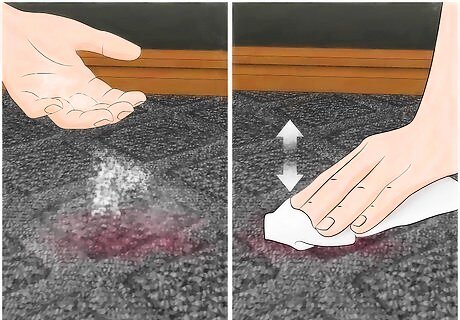
Pour baking soda to absorb the liquid. Baking soda can be used to get rid of the moisture you created while removing the stain. If the liquid has not penetrated your carpet and caused a stain, you can skip the previous steps and only use baking soda to clean up the spill. Cover the spill with baking soda. The baking soda should ball up as it absorbs the liquid. Wait for at least 20 seconds and then vacuum up the baking soda. Repeat this process until the baking soda no longer balls up. You can also blot the area with a clean dry towel. Don't let the baking soda sit for too long so the stain doesn't absorb into the carpet. Berber is tightly woven and retains more moisture than other types of carpet so it will take it longer to dry.
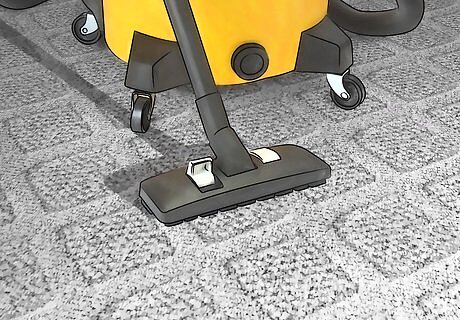
Vacuum immediately after treating the stain. Follow-up any stain treatment with a good dry vacuuming. Vacuuming will remove any excess dampness. Berber carpet's varying depth and intricacies make it easy for water to settle and possibly lead to unhealthy mold accumulating in your carpet. Vacuuming up any dampness is a sure way to prevent this from happening. Vacuuming will also speed up the drying time. Use slow, steady movements as you vacuum the carpet. Rough vacuuming may damage the carpet fibers. If you notice that the stain has reappeared after you vacuum, treat the stain again with water or cleaning solution.
Using Professional Methods
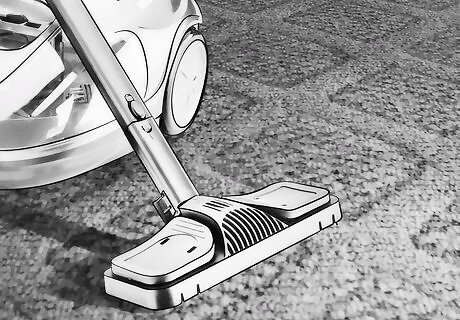
Steam clean your carpet. Steam cleaning uses hot water to deep clean your carpet and extract deeply-embedded particles. You can purchase a steam cleaner and do this yourself. Before you steam clean, you need to vacuum and spot treat the stains on your carpet. Follow the manufacturer instructions for using your steam cleaner. Pull the machine slowly as you go over your carpet. Only go over the area one time to limit the amount of water that you apply to the carpet. It is extremely important that you dry your carpet thoroughly. Not extracting all of the water can result in mold, mildew, and odor. Open windows and use fans to speed up the drying process. If you do not want to purchase a steam cleaner, you can rent one from a local hardware store or carpet store.
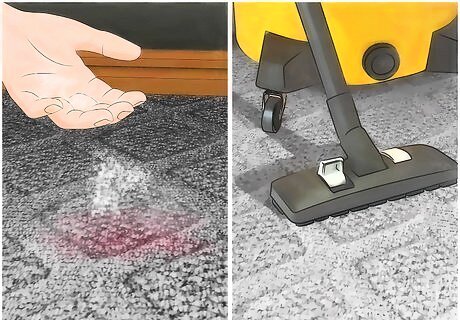
Dry clean your carpet. Dry cleaning involves applying a dry powder to your carpet, working the powder into the carpet, and then vacuuming up the dry powder. The dry powder helps pull the dirt and soil out of the carpet. Vacuum your carpet before you apply the powder. Follow the instructions on the cleaner to determine how much you should use on your carpet. The instructions may recommend that you use a mechanical brush to work the powder into the carpet. However, the brushes should not be used on Berber as it may cause snags. Instead, work the powder gently in with your hands. Always read the label to determine how long to leave the powder on. Some powders require 20 to 30 minutes while other compounds may be vacuumed up immediately. This type of cleaning is recommended for Berber because there is not a risk of over-wetting the carpet and causing mold and mildew.

Hire a professional cleaner. If your carpet is deeply stained or you are not comfortable using these methods on your own, hire a professional cleaner. A professional cleaner will assess the type of Berber you have and the condition of your carpet. The cleaner can then choose an appropriate cleaning method. Use carpet cleaner that has experience working with Berber carpet. Visit the Institute of Inspection Cleaning and Restoration Cleaning website to find a certified carpet cleaner near you.
Using Preventive Measures
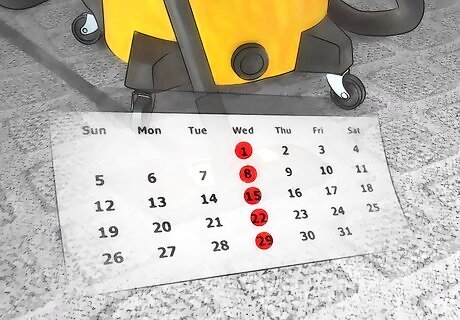
Vacuum your carpet regularly. Weekly vacuuming prevents dirt from building up. Use a high suction vacuum that does not have a brush. Berber is a looped carpet and a brush will snag and damage your carpet. If your vacuum has a brush, turn the brush off when vacuuming. Vacuums with a beater bar should also be avoided. Vacuum up dirt as soon as you see it. If dirt sits on top of your carpet, it will eventually work itself into the loops of the carpet and it will be difficult to remove it.
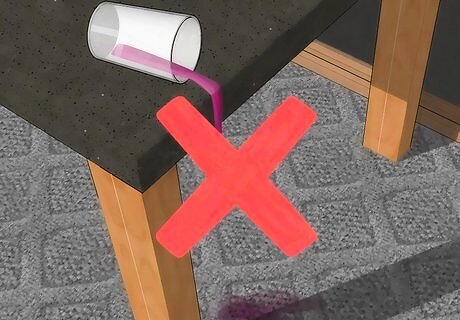
Prevent damage in the first place. Simple things like removing your shoes when you enter your house or placing mats around doors and other high-traffic areas will go a long way in keeping your Berber carpet looking sharp. Do not allow eating and drinking in rooms that have Berber carpet. Children and pets make keeping your Berber carpet more difficult as they are more likely to cause stains and snag the carpet. If possible, limit their time in the areas that have Berber carpet. You can also cover areas with large rugs or place blankets on the carpet when your children are playing on the floor. If you have pets, keep their claws trimmed to avoid snagging your carpet.

Clean up spills as soon as possible. Berber is more stain resistant than other types of carpet. If you spill something on your carpet, you have an opportunity to take care of it before the substance penetrates the fibers of your carpet. Oils are much harder to remove from Berber carpet than other types of spills because oil is easily absorbed by Berber. Time is the most important factor for preventing stains. If you can absorb the spill, you are much less likely to have a stain. It is best to call a professional cleaner for an oil spill.


















Comments
0 comment